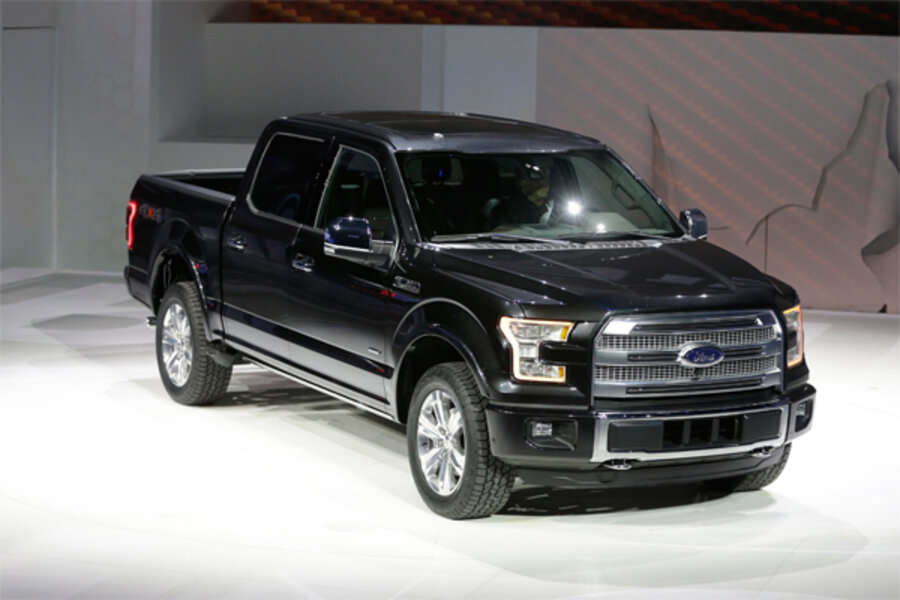How Detroit made gas-fueled cars smarter
The technology spotlight often falls on plug-in, solar-powered, hybrid, flex-fuel, and all-electric alternative cars. But this year's North American International Auto Show in Detroit proved yet again that gasoline is still king.
Sticking with an old fuel does not mean that these "gas-ivores" go light on innovation or green credentials. Automakers have found plenty of ways to squeeze more power and efficiency out of petrol-powered vehicles.
Ford put its F-150 pickup on a crash diet. The company's signature truck will soon come with an aluminum body instead of steel. This lighter metal provides comparable strength, according to Ford, while dramatically reducing the weight of the vehicle.
"Overall, as much as 700 pounds of weight have been saved, helping the F-150 tow more, haul more, accelerate quicker, stop shorter – all with better gas mileage," says Raj Nair, Ford's vice president of global product development, while introducing the new design in Detroit.
Fuel economy is top of mind for many auto companies. Federal mileage standards will require a fleet-wide average of 34.5 miles per gallon by 2016 and 54.5 m.p.g. by 2025. Ford's aluminum design should keep the F-150 on track through 2020, although the new metal introduces some problems. For example, aluminum is more expensive than steel and harder to work with. The trucks will be more dent- and rust-resistant, but other repairs may cost significantly more than before.
While some vehicles slim down, others have found gas savings through bulking up. The mid-size Chrysler 200 sedan sports a new nine-speed automatic engine. The company says these extra gears offer superior fuel efficiency without sacrificing performance. Although official numbers have yet to be released, Chrysler promises 13 percent greater fuel economy than the old four-cylinder engine while also increasing horsepower by 6 percent and torque by 10 percent.
Chrysler is not the only company experimenting with additional gears. Ford and General Motors announced last year that they would team up to design nine- and 10-speed transmissions for a variety of vehicles.






